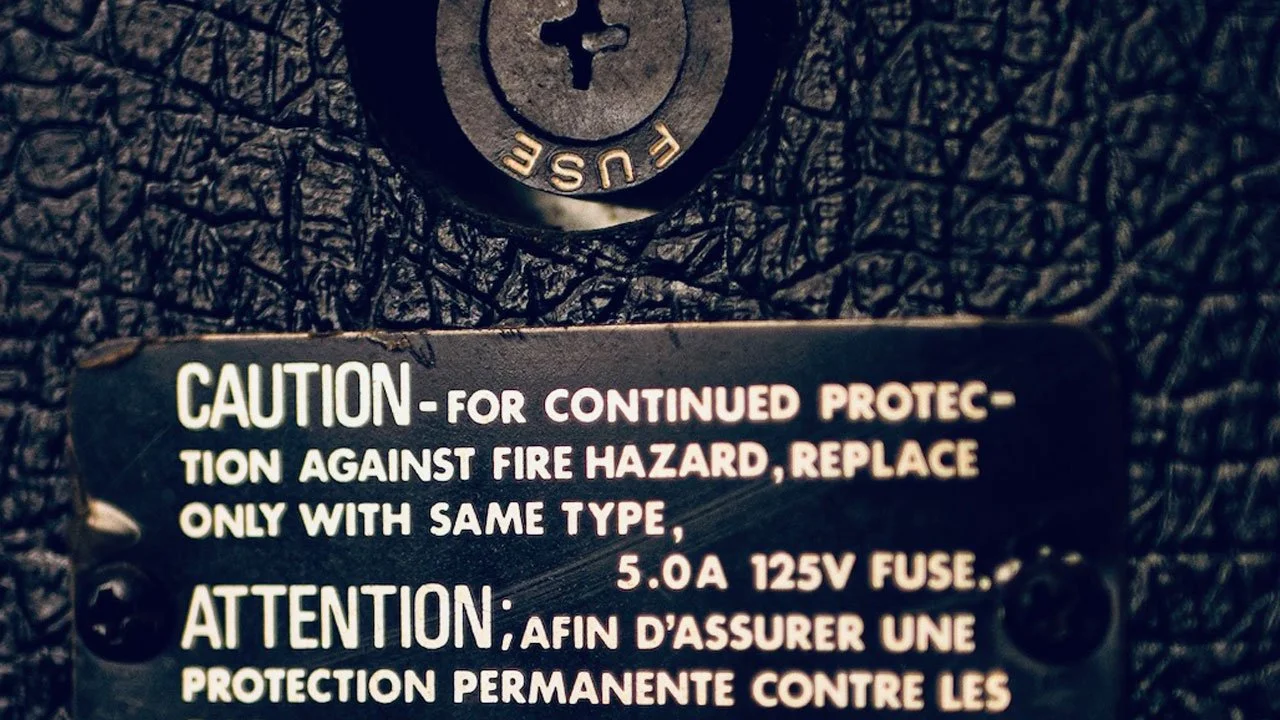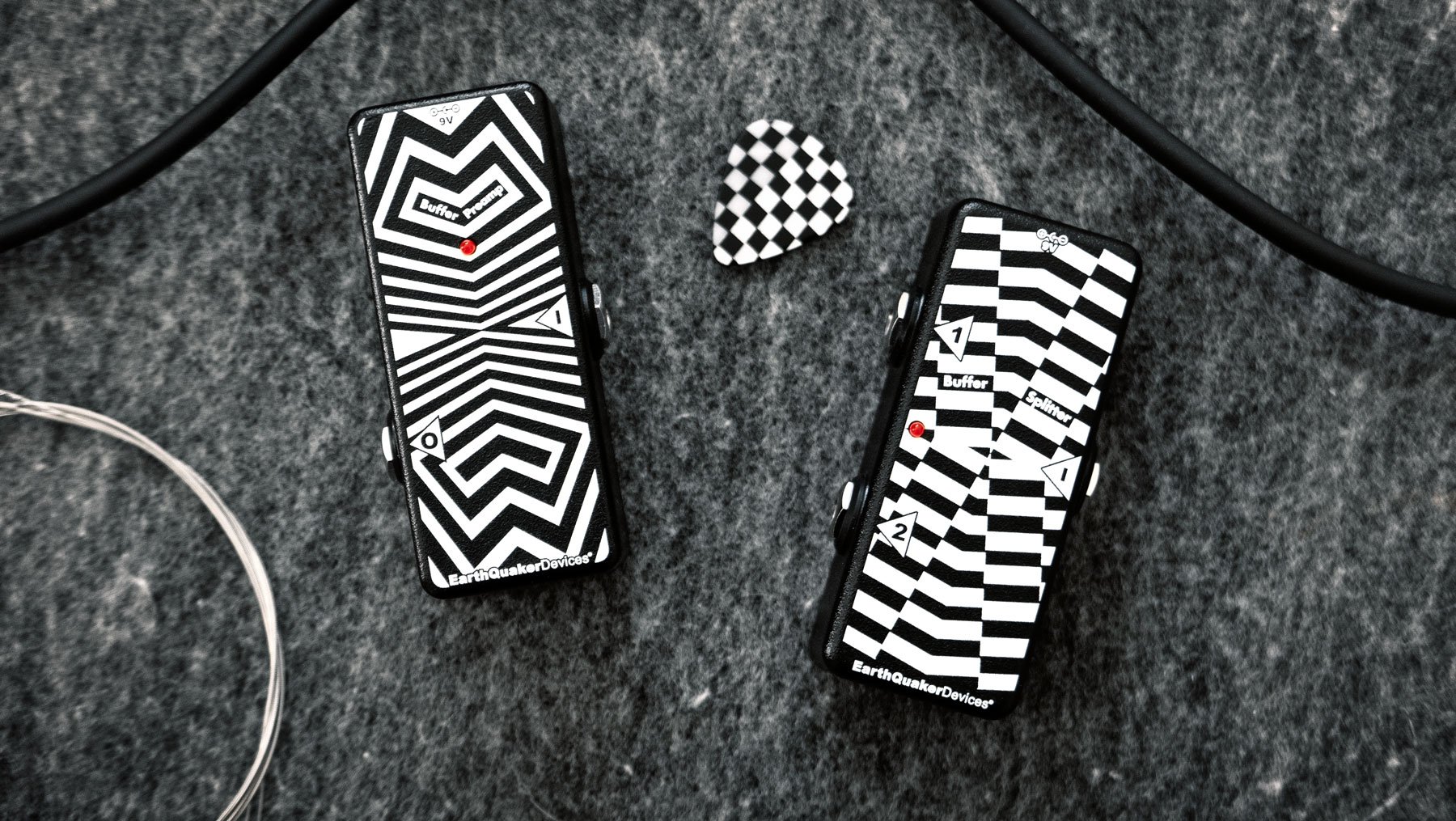Four Unobvious Gigging Essentials
Lane Sparber
Hey, gang! In this installment of my tech blog here at EarthQuaker Devices, I’d like to go over four items that, in my humble opinion, every guitarist or bassist SHOULD have in their gig bags and rigs, but rarely have (in my experience). I’m not talking about extra cables, picks, or strings (you…you DO have extra strings in there, right? RIGHT?!?). I’m going to cover items that keep you safe, will help you get through equipment failures unscathed, and keep your rig sounding consistent no matter where you are or into what you’re plugging. Let’s dig in!
This device is an outlet (or “receptacle”) tester available on Amazon and at most hardware stores. It’s the most critical item on this list. In fact, if any of you take ANYTHING on this list to heart, it should be this humble little device. It will only set you back $10-$15, and it could very well save your life. That’s NOT hyperbole.
NO OUTLET
The sad fact is that power outlets are wired incorrectly fairly often, and anything other than spot-on correct wiring can put you in danger. When you plug in this tester, it will tell you in an instant how the receptacle in question is wired. If it’s correct, the two amber lights on the right will light up. If you get ANYTHING other than that, think twice about plugging your gear into that outlet. Then, think three times. Then four. This tester will also tell you exactly what’s wrong with the wiring to boot. Don’t just trust that the venue has safely wired power for their bands. You may be surprised how often that is NOT the case, and you don’t want to be playing a gig with an ungrounded outlet or one where the hot and neutrals are reversed. Properly wired power is beyond important when it comes to safety. Don’t compromise!!!
RE-FUSE TO FIX THE PROBLEM
You might think this one is obvious, but it really isn’t. Almost ALL of my clients and bands I’ve teched for never EVER carried spare fuses for their rigs. In essence, you need two or three spare fuses in the correct values for every piece of gear you use (if that gear has fuse holders in the back; not all do). Fuses are dirt cheap too, so stocking up won’t cost you an arm and a leg.
For the uninitiated, fuses come in a few basic physical sizes, amperage ratings, and voltage ratings. Here in the U.S.A., our standard wall voltage is (we hope) 120 volts A.C. Because most fuses here come in either 125v or 250v versions, you need to be aware of what your gear specifies - it’s almost always spelled out on the back panel. If no voltage rating is specified, simply go with 125-volt fuses.
However, the most critical aspect to match up is the amperage rating. You need to match this EXACTLY. DO NOT DEVIATE. If your amp calls for a 2 amp fuse, that is ALL you put into it. If you go lower, it won’t damage anything, but you’ll be blowing fuses for no reason. If you go higher than the specified rating, then when and if a problem arises, the fuse won’t blow, and you can thus cause extremely costly damage to your gear. Don’t risk it. It’s just not worth it.
Also, there are two general categories of fuses: fast-acting and time-delay (or “slo-blow”). Once again, you can’t deviate here. Install ONLY what the gear designers specify. Most non-tube amp gear uses fast-acting fuses. If the info on the back of your gear simply says “4A Fuse”, that means you should install a standard fast-acting fuse. If it reads “4AT” or “4A Slo-Blo,” that means it needs a time-delay fuse.
This vintage Roland Jazz Chorus takes a regular, plain-old 5 amp 125v fuse.
This Fender amp wants a 1 amp, SLO-BLO fuse.
This modern Marshall wants to see SLO-BLO (the “Ts” stand for “Time Delay”) fuses in both positions.
The reason these fuses should be in your gig bags is simple: sometimes, a power surge can take out the fuses in your gear. Without spares, you’re dead in the water. If you carry these with you, you’re back up and running in seconds. If, however, the new fuse blows again immediately on power-up, it’s time to take that piece of gear to your tech.
REGULATION PLAY
This next item is the priciest on this list, and with good reason - it does a LOT. What I’m going to talk about here is a voltage regulator. What I’m NOT talking about is a “power conditioner.” A power conditioner is little more than a glorified outlet strip. Sure, most offer surge protection, but that’s about it. A voltage regulator, on the other hand, does SO much more.
Here in the U.S., as stated above, our wall voltage is SUPPOSED to be 120 volts A.C. at the outlet. Period. In practice, however, this varies widely from location to location. I’ve seen it as low as 108 volts and as high as 130(!) volts. Several factors can account for this variance, but for our purposes, you just have to know that variations exist. A voltage regulator makes sure that ANY gear plugged into it will ONLY see 120 volts A.C. of clean power, regardless of what wall voltage the regulator itself is plugged into (within limits which often can be set by the end-user). This voltage stability is HUGELY important for making sure your rig sounds consistent from venue to venue. Vacuum tube gear is especially susceptible to fluctuations in wall voltages because their power transformers boost incoming voltage exponentially. Depending on the transformer’s turns ratio, as little as a 10-volt increase in wall voltage can boost their internal high voltage lines by 100 volts, give or take. That is significant and can drastically alter the sound of your tube amps. Even though solid-state gear fares better with wall voltage fluctuations, they CAN be affected too, so why risk inconsistent tone?
A good voltage regular’s pricing usually starts around $500 and can go upwards of $2500 for the more advanced versions. Thus, this IS an investment, but it’s well worth the absence of headaches over time. I have a small, one rack-unit Furman AR 1215 that I keep in a portable single unit rack gig bag. It goes EVERYWHERE I play, and I plug into nothing else when I’m gigging or recording.
GETTING AMPED
We all have brought our own amps to gigs and/or recording sessions. That’s common practice. However, bringing a backup amp just isn’t practical or feasible in this day and age, which means that if and when your amp goes down, you’re stuck. I’ve been there, as have (I imagine) a lot of you. The GOOD news is that these days a backup amp can fit in the palm of your hand or even lie in wait on your pedalboards. With the plethora of reliable and relatively inexpensive options out there, there’s no reason not to be prepared for this potential emergency.
The Orange “Terror Stamp” puts out 20 watts of power right at your feet.
The compact and efficient Seymour Duncan “Powerstage 170” offers -you guessed it- a whopping 170 watts of power.
The ISP “Stealth” is a power amp ONLY that puts out 180 watts mono.
These are only a FEW of the myriad options out there to make sure you get through your gigs, and you can find them with pretty much infinite feature sets (tone-shaping options, power output options, effects loops, etc.).
These amps may or may not recreate “your sound” when you plug into them. But they will usually sound great and get you through the gig if your amp fails, which allows you to fulfill your obligations and get paid with a minimum of hassle, so they’re WELL worth the initial investment.
PACKING IT ALL IN
I hope you’ve found some value in these off-the-beaten-path suggestions for making sure your gigs are as failure-proof and hassle-free as possible. I’ve seen a lot over the past 30 years or so that I’ve been a tech. The items and ideas covered above are offered up and have been learned from various mishaps I’ve seen during that time. A little knowledge and a bit of investment upfront will pay off handsomely in the long run.
Until next time, stay safe and PLAY IT LOUD, my friends!
Lane Sparber is an amp / guitar / bass / pedal tech who lives and works in Fresh Meadows, Queens, New York. He started repairing gear in his mid-teens, and he’s 46 now, so you do the math. When not causing mayhem in his workshop, he can be found desperately trying to hide his latest orchid purchases from the rest of his family. You can find him on Instagram at @amptech74 or on Facebook at www.facebook.com/lane.sparber. Come say “Hello!”














